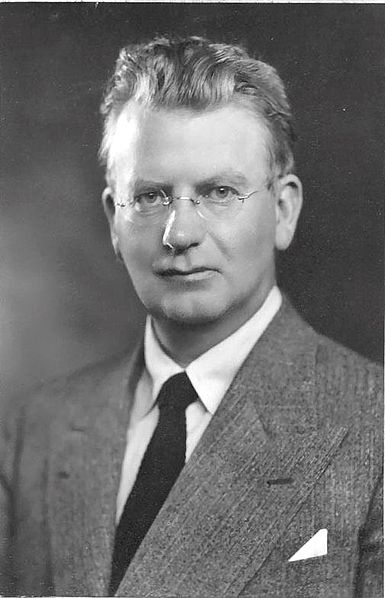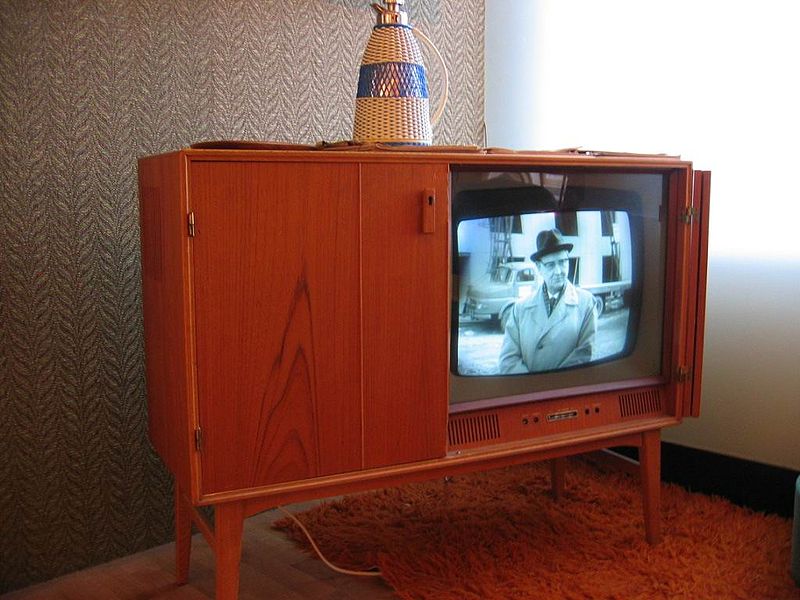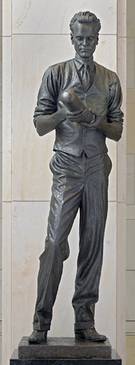This Week in Science History - John Logie Baird
Interview with
This Week in Science History saw, in 1946, the death of John Logie Baird, the pioneer of television. Although his mechanical television system was abandoned in the late 1930s in favour of electronic television, it was still an important period in the 'evolution' of television and some of the techniques still have applications today. Baird continued to be a prominent figure in television technology up until his death.
 Baird was born in 1888 in Scotland. Even as a young man his interest in electrical communication was clear - he used to rig up makeshift telephone exchanges in his bedroom to talk to his friends across the street. He attended university in Glasgow, but unfortunately his degree was cut short by the start of the First World War. Unable to serve in the army because of his health, he became an electrical engineer, then in 1923 decided to move to London to pursue his dream of 'seeing by wireless' using apparatus he had built himself out of old tea chests, hat boxes and a bicycle lantern.
Baird was born in 1888 in Scotland. Even as a young man his interest in electrical communication was clear - he used to rig up makeshift telephone exchanges in his bedroom to talk to his friends across the street. He attended university in Glasgow, but unfortunately his degree was cut short by the start of the First World War. Unable to serve in the army because of his health, he became an electrical engineer, then in 1923 decided to move to London to pursue his dream of 'seeing by wireless' using apparatus he had built himself out of old tea chests, hat boxes and a bicycle lantern.
Viewing moving images on a screen is not the same as viewing people moving about in real life. Television creates an illusion of motion by refreshing the image on the screen line by line so fast that our brains interpret the images as moving.
In his early apparatus, Baird used a version of what is known as a Nipkow disc to help capture the images. This is a disc of metal or cardboard with a series of holes spiralling in to the centre that allow light through a viewing window to a photocell that converts the changing light levels coming through the holes into electrical pulses, a process known as rasterization. These were transmitted along telephone lines to a neon light that was viewed through another Nipkow disc rotating at the same time as the original. The flashing of the light viewed through the rotating disc built up the picture of the object. As the disc rotated, each hole would produce a scan line that together made up the picture. Baird's disc has only 30 holes, meaning that the final image was made up of only 30 lines. In comparison, a modern television that uses cathode ray technology would have around 600 scan lines making up the picture.
 Baird was the first to pass several milestones in the development of television. He made the first transmission of a moving object in 1924 and in 1926 he presented the first transmission of live, moving, monochrome images to members of the Royal Institution and a reporter from the Times in his London laboratory.
Baird was the first to pass several milestones in the development of television. He made the first transmission of a moving object in 1924 and in 1926 he presented the first transmission of live, moving, monochrome images to members of the Royal Institution and a reporter from the Times in his London laboratory.
In 1927 he broadcast the first long distance transmission from London to Glasgow, and in 1928 his assistant Benjamin Clapp travelled with a televisor for receiving the images to New York, where it successfully received a broadcast from Baird in London. He followed this series of incredible breakthroughs later in 1928 with the first transmission of colour images.
 However, Baird was not the only innovator working on television, and he was dealt a blow when the American Philo Farnsworth's electrical television apparatus began to overtake his mechanical methods in terms of quality and ease of use. The BBC, which had been using Baird's system since 1930 decided to switch to electrical television after a successful 6 month trial. The last mechanical television broadcast was made in 1937.
However, Baird was not the only innovator working on television, and he was dealt a blow when the American Philo Farnsworth's electrical television apparatus began to overtake his mechanical methods in terms of quality and ease of use. The BBC, which had been using Baird's system since 1930 decided to switch to electrical television after a successful 6 month trial. The last mechanical television broadcast was made in 1937.
Baird continued to work and innovate in the world of television, patenting systems for both fully electric colour television using cathode ray tubes (still used in non-flat screens today) and 3D television, which he was working on at the time of his death.
Since his death, his legacy has remained. He is recognised as a major figure in the invention of television, something that now plays such a huge role in our lives both as education and entertainment.
- Previous Seawater Greenhouses
- Next The Importance of World Hepatitis Day









Comments
Add a comment